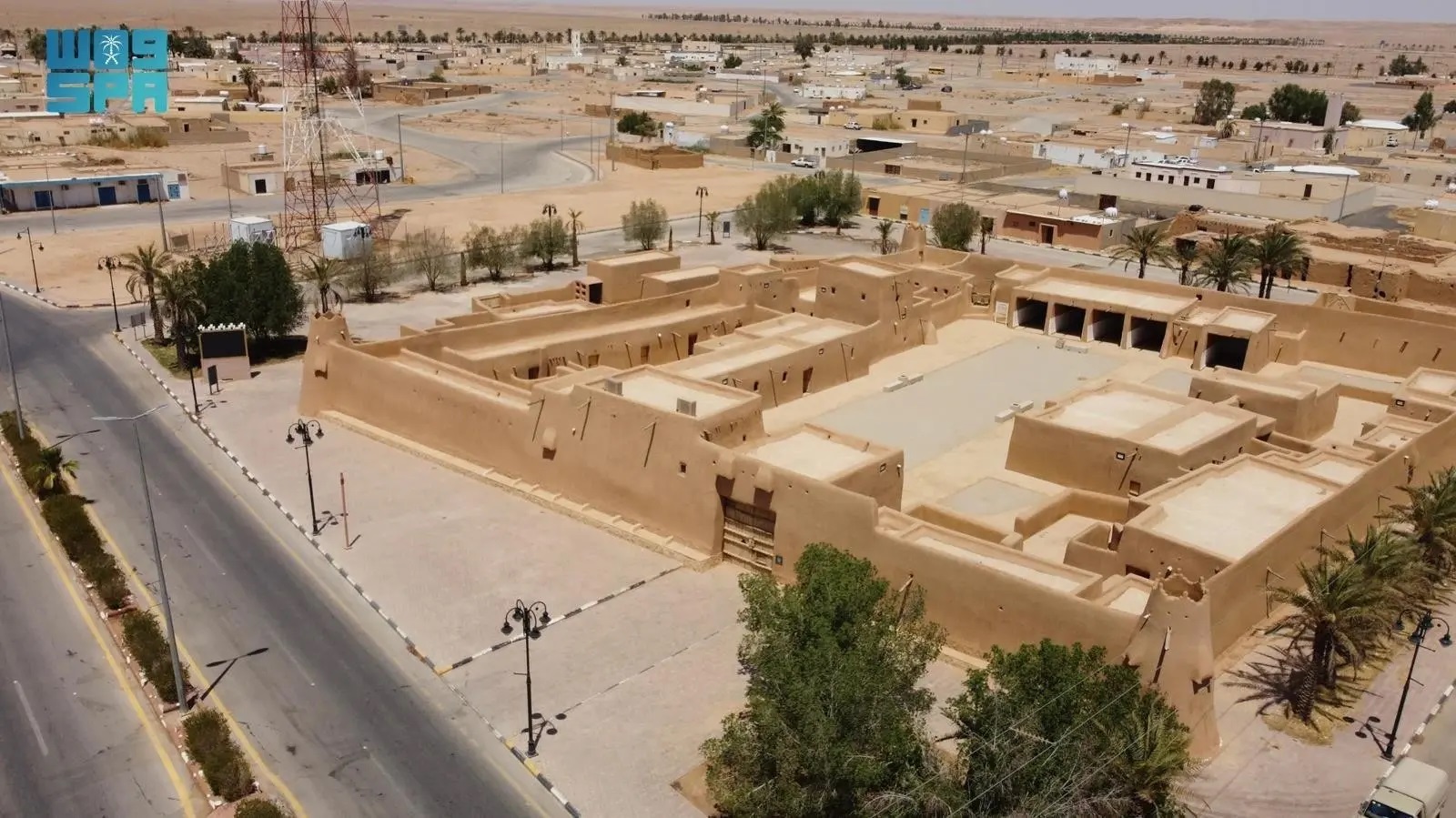
King Abdulaziz Palace in Lina: Historic Landmark Showcasing the National Day
In the heart of the historic village of Lina in Rafha Governorate, Northern Borders Region, stands King Abdulaziz Palace, which has stood for nearly 90 years as a witness to the unification era and a lasting imprint in the nation's memory. The palace is one of the most prominent historical landmarks narrating the journey of King Abdulaziz in building the state and unifying its territories.
The palace was built by order of King Abdulaziz around 1354–1355 AH (1935–1936 AD) on an area estimated at 4,320 square meters, following the architectural style of the time, using mud, stone, and adobe. It was adorned with four circular towers at its corners, reflecting both defensive and architectural aspects. It featured a massive wooden main gate on the southern façade, with another side gate on the western façade.
The palace consists of 52 rooms overlooking a wide courtyard, in addition to a mosque, a water well, horse stables, a prayer area, and a ceremonial square. It once served as the headquarters of Lina Principality and the affairs of Northern Borders Region, as well as the residence of the governor and his family, making it a prominent administrative and historical symbol.
The palace's location was no coincidence: Lina lies about 100 kilometers from Rafha on an ancient trade route linking the heart of the Arabian Peninsula with Iraq through the famous Darb Zubaydah. This strategic position made it a meeting point for merchants and caravans traveling between Iraq, the Levant, and the Arabian Peninsula, further supported by its abundant water wells that turned it into a hub of stability, economic growth, and social prosperity.
Today, as the Kingdom celebrates its 95th National Day under the slogan "Our Pride is in Our Nature," King Abdulaziz Palace in Lina stands out as a monument of glory that embodies authenticity and modernity in the Kingdom's history, serving as a symbol connecting present generations with the journey of unification and development. It is not merely an archaeological building but a living memory affirming the great efforts made by King Abdulaziz in establishing a secure and unified homeland.








